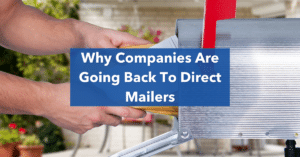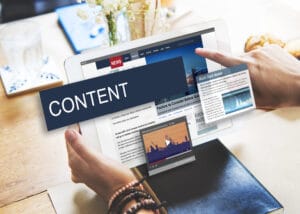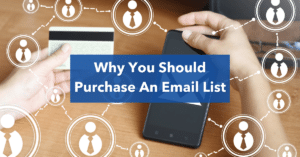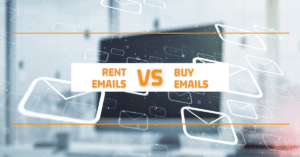
Why Companies Are Going Back To Direct Mailers
Why Companies are Going Back to Direct Mailers For the last few years, email marketing data has been on the rise and at the forefront
Many small businesses shy away from email marketing because they think it’s not a good way to reach customers. That couldn’t be farther from the truth—a recent PRDaily study showed, “77% of U.S. workers prefer to be contacted through email”(PRDaily 2019) Email is a direct line of communication. It gives consumers freedom and flexibility to read your message on their terms. It also allows businesses the opportunity to be highly targeted and personal in what is sent. Informing customers about sales, offer promotions on items or use it to send a personal follow-up message to a purchased item.
To get started, you will need a “validated” list of email addresses. The best place to start is with your current client roster. These names and email addresses are the people who have already expressed an interest in your products.
You can collect this information when customers visit your business, or you can have a form on your website to collect the information. Both work. Make sure you ask enough questions so you can segment your list—categories for interests and industries (if you are B2B), for example, help you send the right offers to the right people.
Hint: To increase your signup rates, offer your customers incentives to join your email list. People love getting things for FREE. It could be a coupon, and extra discount, or (if you are a B2B company) an ebook.
Once you have a great list, make sure you keep it up to date. When you send out campaigns, remove emails from the list if they bounce. And if you want to bring on other data sources to reach new prospects, use the customer demographic information you’ve collected to help with renting or purchasing from a data vendor.
Now if you are looking for new business-to-business clients, diving into cold-emailing can be tricky. This is because the when to send them an email, who to send the email to, and what industry is most likely to convert. All play a key role in getting prospects to reach back out to your business.
Businesses that are just now forming, spend money right away “The average small business owner uses about $10,000 in startup capital.” (SEMRush 2021) Most are looking to outsource certain tasks or invest in software that will help them grow their new business. Although they are not looking to spend a lot, having them as a client early in their journey can help foster a trust that leads to more spend later on. With all this being said, purchasing a New Business Email List can help get your brand in front of potential customers with ease.
Depending on the service or product you are trying to sell a company, it’s important to get your email in front of the decision-maker. In most cases, this is the C-level executives, and buying a list of their emails can help fuel your email marketing campaign. While in other companies, the decision-makers could be the head of a department, an employee that would use the product, or the owner of the company. Of the solutions for reaching out to a prospect, most prefer to be reached out to via email, and buying a list of your decision-makers, will gain you more B2B sales.
Whether you have been in the market for a long time or are just starting out, email marketing should be a key part of your strategy. Your strategy for email marketing should work 2 ways, prospecting for new customers and updating your current clients about any products or services you may have. Since our article is focused on growing your business, let’s dive into prospecting for new consumers.
When you consider “who” your customer is, it’s important to consider where they live, can they afford your product/service, and are currently in the market to purchase. With this in mind, there are a few ways you can get email information on your target market. One of which is by being a vendor at a local event, where prospects can sign up for your email list directly. These are great for niche markets where the target market needs more time to make decisions and typically work great for those in the industry looking to sell cars, art, wedding-related items, etc. Another option is to purchase a mailing list and have the emails deployed by the company. These lists can be drilled down by past purchasing behavior, zip codes, and much more. With these email lists, you can generate interest in your product and introduce your product to a new range of people.
Email marketing works for everyone, whether you are looking to scale your company or looking to reach new businesses. Sending an email to a potential client is a great way to get new customers. However, there are a number of things to keep in mind when conducting email marketing campaigns.
Do note that a marketing list may not be the problem with your marketing efforts, unfortunately it can take time to see results from your email marketing campaign.

Why Companies are Going Back to Direct Mailers For the last few years, email marketing data has been on the rise and at the forefront

How to Create a Personalized Direct Mail Piece Adding personalized elements to your mail piece increases response rates. Mail recipients prefer to receive mailers that

Using Business Mailing Lists to Drive Leads Finding new business leads can be a tricky process, whether you are relying on yourself, your marketing team,

How to Develop Content that Works “My website is a beast that must be fed,” a real estate broker recently lamented. And the website’s favorite

8 Reasons to Purchase an Email List An accurate email list has the power to jumpstart new businesses or give some much-needed traction to older

Why Rent or Buy an Email List? When it comes to email marketing, you may have heard that renting or buying email lists is always
"*" indicates required fields
